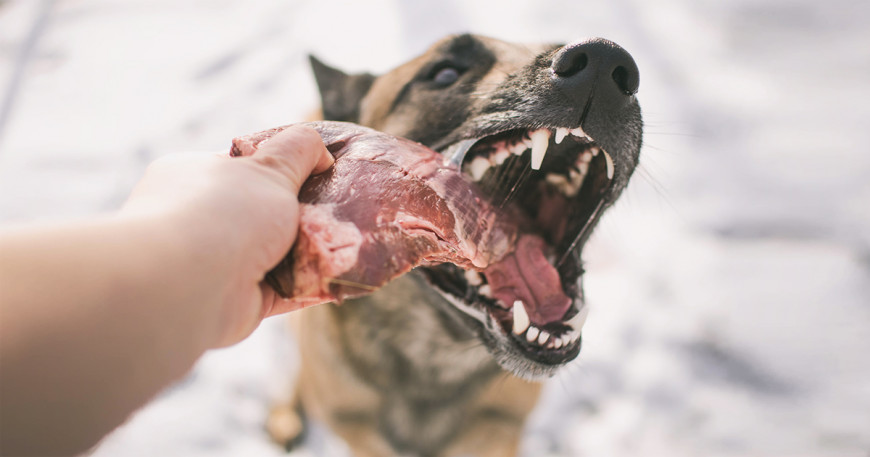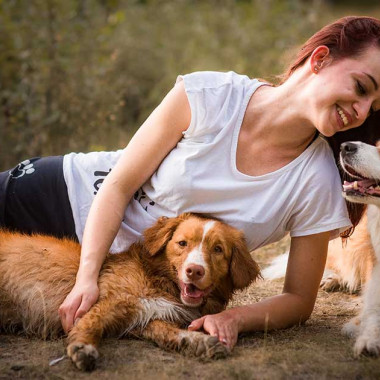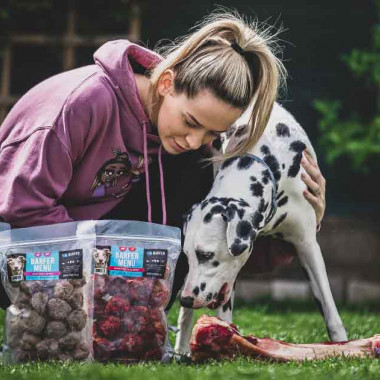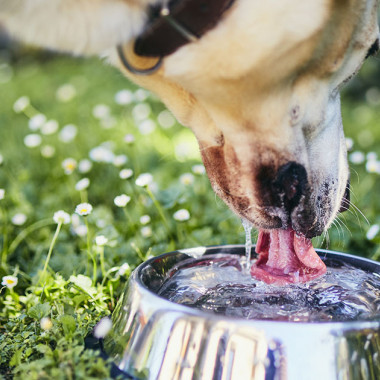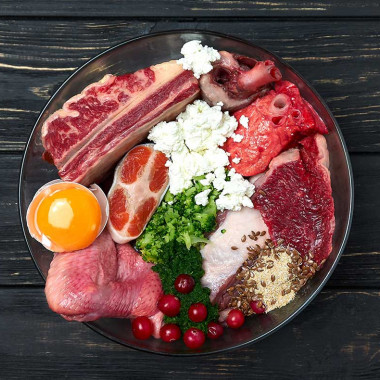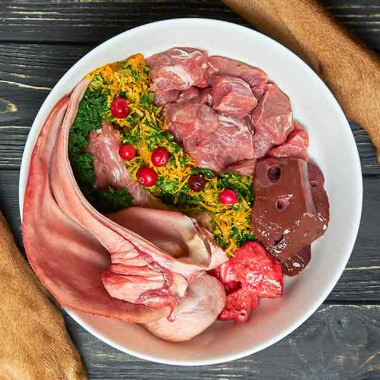Every loving dog owner tries to provide the best for their companion. The most important thing is to take care of the dog's basic life needs. These needs vary in priority. Some are essential for overall functioning, while others are crucial for mental well-being and development. Starting from the highest priority, we begin with physiological needs such as hunger, thirst, and breathing. Without meeting these needs, no organism can survive for long, which is why understanding nutrients and their utilization is essential. After all, the well-known saying "love goes through the stomach" aptly reflects the importance of this topic.
Nutrients
By consuming food, the body absorbs nutrients. Nutrients are substances that play a specific role in the organism. They are essential for growth and maintaining optimal health. The feeding portion must include nutrients such as water, proteins, fats (lipids), carbohydrates, minerals, and vitamins. These can be classified by their physiological effect, chemical composition, or whether the organism can synthesize them itself. If not, they must be obtained externally, i.e., through food.
According to their physiological effect, nutrients are divided into four groups:
Structural – Proteins and certain minerals (calcium and phosphorus...) whose function is to build new tissue and regenerate cells.
Energy – Primarily carbohydrates and fats, providing energy for vital body processes such as digestion, movement, and breathing.
Replacement – Water and minerals, which replace nutrients lost through bodily functions.
Regulatory – Vitamins and minerals.
According to their chemical composition:
Organic – Nitrogenous and non-nitrogenous organic substances.
Inorganic – Minerals.
According to the organism’s ability:
Essential – Substances the body cannot synthesize and must be obtained from food.
Non-essential – The body can synthesize them, but they can also be provided through food.
Digestive Tract
Digestion is the process of breaking down complex nutrients into simpler forms for absorption and the subsequent elimination of undigested remnants. This process begins in the mouth and ends in the rectum. Initially, food is mechanically broken down by tearing, crushing, chewing, or gnawing. It is mixed with saliva and, through peristalsis, moved to other parts of the digestive system, where chemical digestion and absorption take place. Nutrient digestion occurs in different parts of the digestive system, so it is important to understand the sequence and structure of a dog's digestive system.
Dog's Digestive System:
Oral Cavity
Pharynx
Digestive Tract – Esophagus, stomach, small intestine, large intestine
Liver
Pancreas
Rectum
Food Breakdown in Terms of Nutrients
After the food is consumed, it is processed based on its contents. Each food can be likened to a scheme based on its nutrient composition.
Every food consists of:
Water
Dry matter (in industrially manufactured foods, raw food is directly divided into inorganic and organic components)
A. Inorganic substances (minerals) B. Organic substances
B1. Biologically active substances (vitamins, hormones, enzymes) B2. Non-nitrogenous substances
Carbohydrates (fiber, starches, sugars)
Lipids (fats)
B3. Nitrogenous substances
Proteins
Non-protein nitrogenous substances
The Process of Nutrient Digestion
Digestion is adapted to the type of food the individual consumes. A dog is a carnivore, whose digestive system can also process plant-based materials. However, its diet mainly consists of meat. In the wild, dogs hunt or scavenge and consume entire carcasses, including bones and internal organs filled with partially digested plant material. A dog's digestive system is adapted to prevent intoxication from consuming raw animal parts. Dogs possess a highly efficient detoxification system and gut microflora, protecting the internal walls of the digestive tract.
In general, digestion is divided into enzymatic and microbial digestion. Since we are discussing carnivores, enzymatic digestion predominates. Digestion begins in the mouth, where food is mixed with saliva, partially broken down, and made easier to swallow. Saliva helps detect the taste of food, enzymes dissolve certain substances, and it maintains oral hygiene. Food is transported to the stomach by peristaltic movements of the esophagus. Mucus is secreted by the esophageal lining to moisten the food before it reaches the stomach. At the end of the esophagus is a sphincter that prevents food from returning to the esophagus from the stomach. When the stomach fills, it acts as a reservoir, allowing the dog to consume larger amounts of food at once. Thus, meals can be rich. The stomach is capacious, holding between 0.5 to 0.8 liters, and the chemical digestion of proteins by pepsin begins here, produced by gastric juices. These juices are secreted by cells in the stomach lining, which are designed to digest food while also preventing the body from digesting itself. This function is maintained by mucin, which protects the stomach lining and moistens the food. The amount and concentration of juice depend on the composition of the food. The mixing of food with juices and its movement is again facilitated by peristaltic movements. This semi-liquid mass is called chyme and is prepared to enter the small intestine.
Speed of Gastric Emptying and Progression - The rate at which the stomach empties and the chyme moves through the digestive tract depends on osmotic pressure, density, acidity, particle size, and overall volume. Larger food particles slow gastric emptying, and fat-rich food also slows the process.
The primary site for chemical digestion and nutrient absorption is the small intestine. Unlike proteins, carbohydrates and fats in the chyme remain largely unchanged. The duodenum (the first part of the small intestine) breaks down chyme with the help of essential digestive organs such as the pancreas and liver. Together, the duodenum, pancreas, and liver produce secretions that are interdependent. The duodenal secretion protects the intestinal lining from the acidic chyme coming from the stomach and dilutes the food mass. Bile, produced by the liver, activates pancreatic lipase and emulsifies the fats present in the diet. Fat, starch, and glycogen are broken down into simpler components by pancreatic lipase and amylase. Intestinal villi absorb the digestive products. The surface area of the small intestine, thanks to these villi, is large, with different types of cells ensuring effective nutrient absorption. Fats, vitamins, carbohydrates, minerals, and proteins are absorbed here.
The final phase of digestion occurs in the large intestine, where the remaining fats and carbohydrates are fully absorbed. The material entering the large intestine is resistant to enzyme action in the small intestine. In the duodenum, no enzymes are produced, there are no villi, and the absorption capacity is low, except for water and electrolytes. Here, undigested substances are fermented by microorganisms. Fermentation converts organic materials into beneficial enzymes. The result of fermentation includes indole, skatole, phenols, hydrogen sulfide, amines, ammonia, fatty acids, carbon dioxide, hydrogen, and methane. In the large intestine, bacterial synthesis of B vitamins and essential amino acids takes place, which were not fully absorbed in the small intestine. If these nutrients are not adequately processed and absorbed, they are expelled as waste in the form of feces. The appearance, smell, and consistency of the feces depend on the digestibility of the food. Generally, flatulence and a strong odor in the stool may indicate poorly digested food.
Composition of Digestive Juices:
Saliva – 99% water, mucin, inorganic salts.
Gastric juice – Water, hydrochloric acid, pepsin (proteolytic enzyme), inorganic salts, mucin, and intrinsic factor (necessary for B12 absorption in the small intestine).
Small intestine secretion – Alkaline secretion.
Liver bile – Sodium and potassium salts, bile acids (glycocholic, taurocholic), bilirubin, biliverdin, cholesterol, and mucus.
Pancreatic juice – Water, bicarbonate ions, digestive enzymes: lipase, amylase, protease (trypsin, chymotrypsin, carboxypeptidase, nuclease...).
Microflora
Beneficial bacteria are an integral part of digestion. The presence of microflora provides protection in the form of a microbial biofilm that covers all mucous membranes of the digestive tract, from the mouth to the rectum, including the respiratory and urogenital tracts. Microflora consists of many bacteria, viruses, fungi, and protozoa, forming a complex ecosystem with individual species diversity. The composition varies throughout the tract, with the highest concentration in the large intestine. The microflora is influenced by food composition and digestive efficiency.
Function of Microflora
Microflora plays a positive role in various aspects of health. First and foremost, it acts as a barrier against pathogens and endotoxins. It creates an environment unsuitable for bacteria that do not naturally occur in the digestive tract. It helps develop the physiological structure of the mucosa and ensures its protection.
Proper nutrition supports a healthy microflora, which in turn promotes proper digestion, allowing the body to fight harmful bacteria, destroy viruses, and eliminate toxins. A healthy, balanced diet also boosts immunity, and as much as 70% of the immune system is found in the intestines of our furry companions. For the body to be at full strength in fighting external pathogens, it needs love in the form of balanced nutrients.
